In the interest of being good stewards of the planet AND saving money it’s a good idea to keep an eye on energy consumption. But how? You’ve probably seen commercials for Sense Energy Monitors but that seems kind of extreme to me. Also it has a learning algorithm that takes MONTHS to work and some items never get properly identified.
I’m taking the ONE AT A TIME approach by using simple outlets that can be used for single applications. Introducing the Sonoff S31
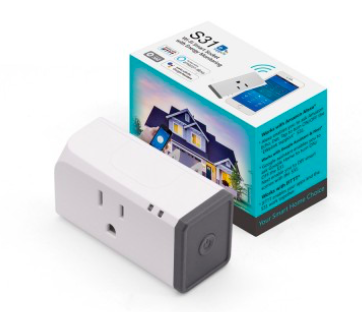
Very cool and also reasonably inexpensive. These work right out of the box and link to an app called EWELink.
Just for the record I think EWELink is CRAP.
Also this is Cloud based and the Cloud lands in China somewhere which really doesn’t appeal to me at all. So we’re going to flash this device with Tasmota firmware and no more talky talky to China.
First of all to flash the device you must open it up and there is a little bit of soldering involved.
Take a pocket knife and gently pop the gray cap off the end. 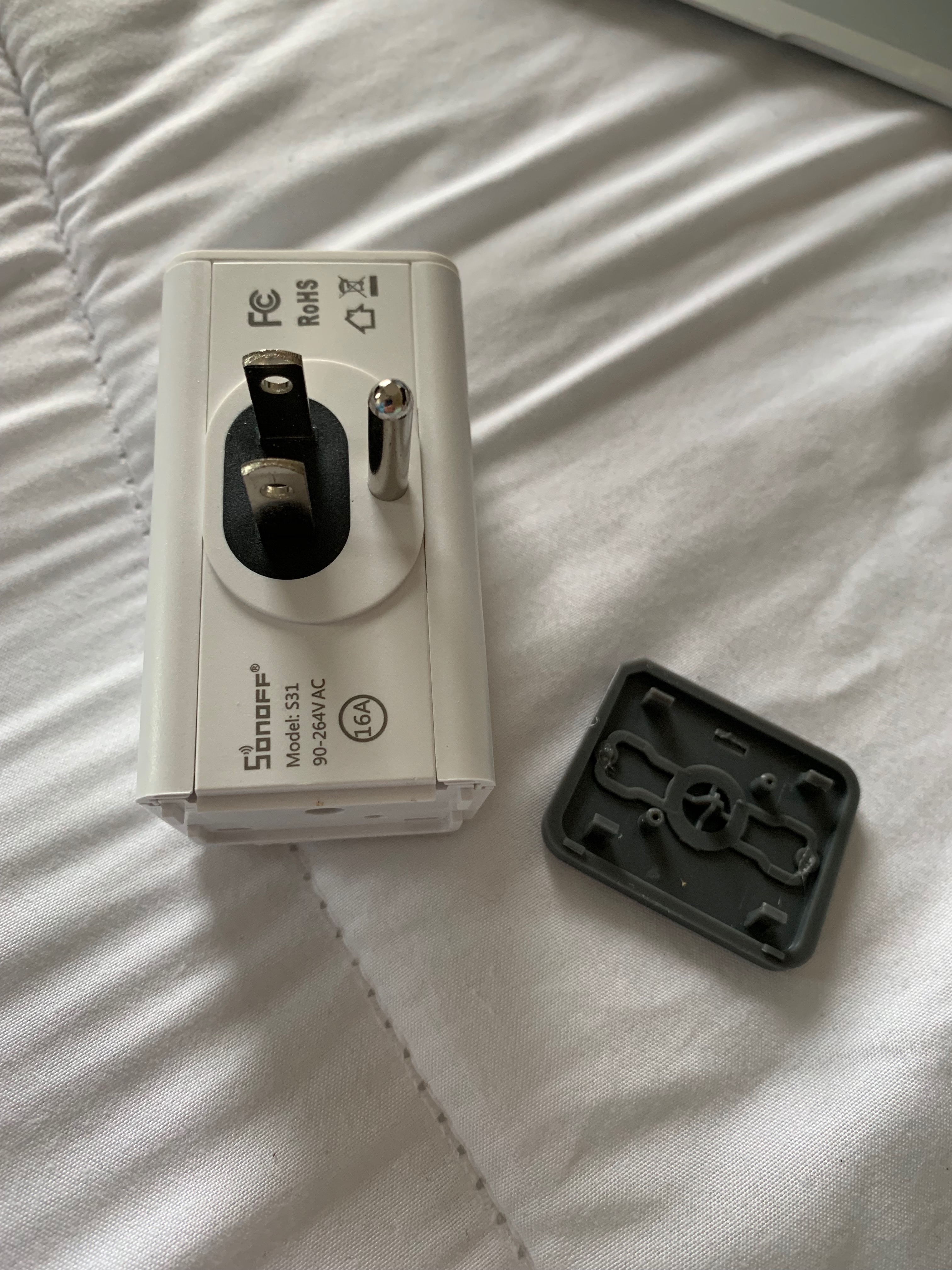
Now slide out the two white corner pieces.
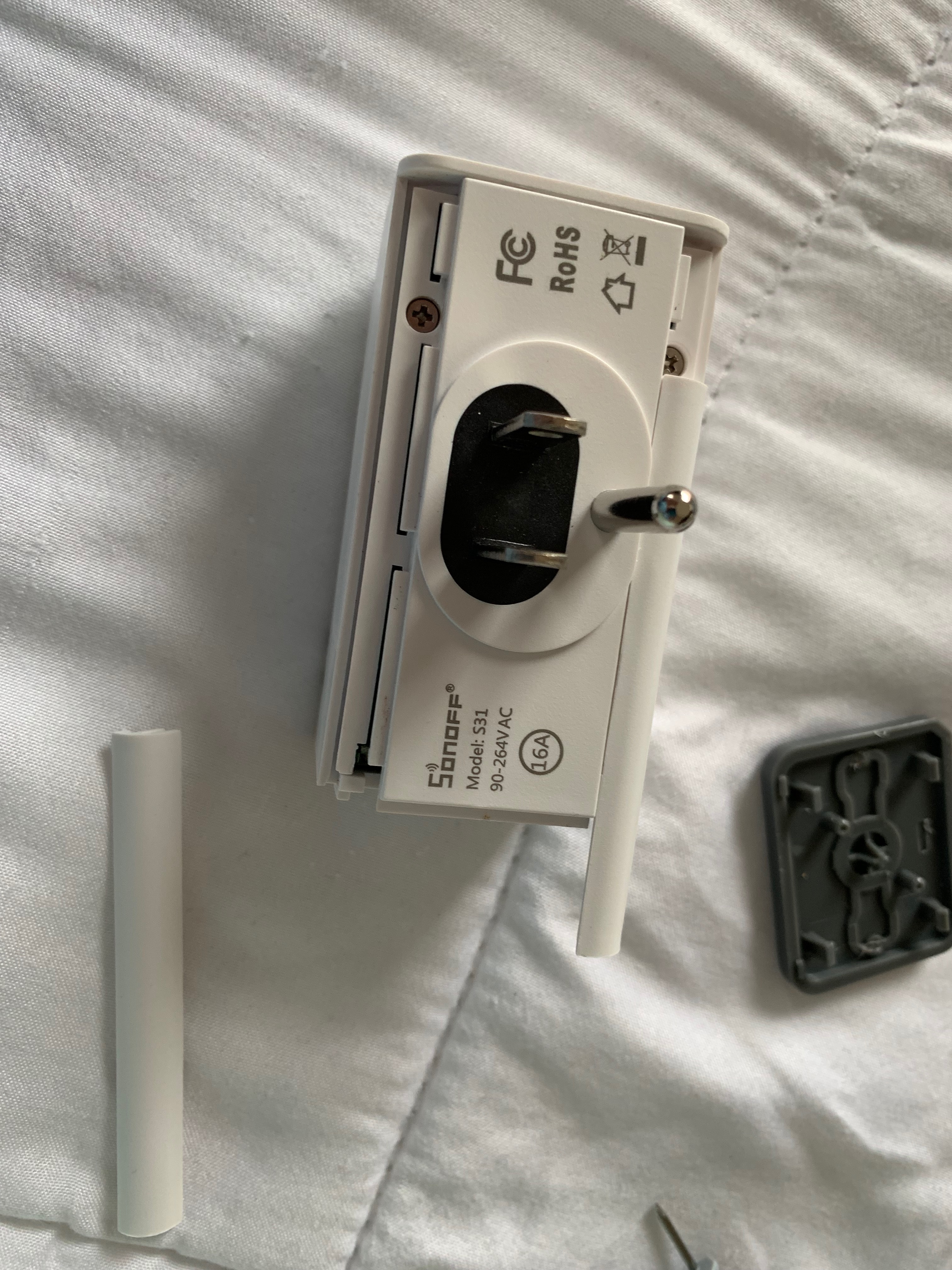
Now remove the three small screws and lift out the board.
The board on the end is what we want and we want to solder breadboard wire leads on to the following terminals:
- Vcc
- TX
- RX
- Ground
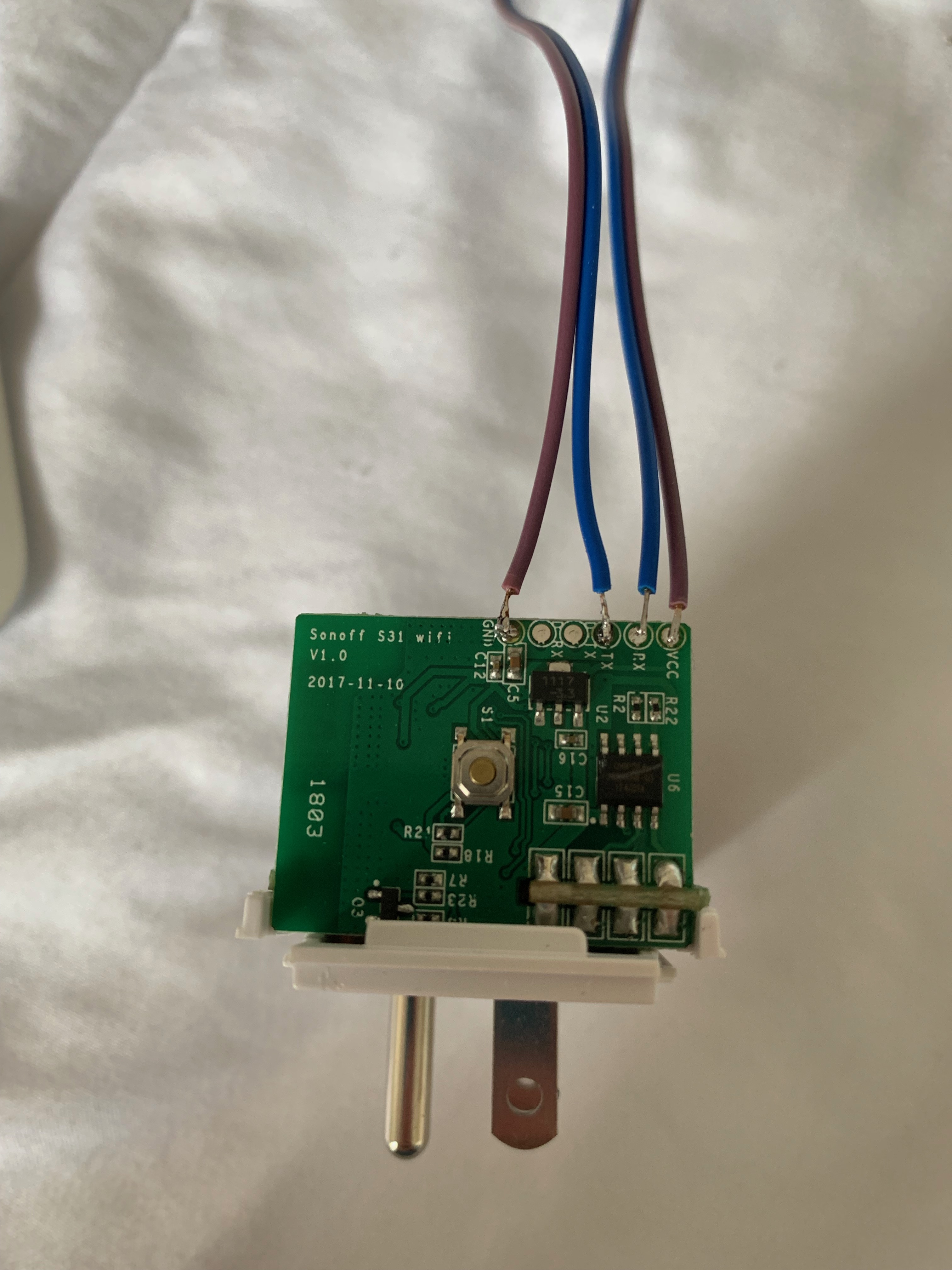
Ready to flash. I don’t really want to do through every possible step here for flashing and I have directions for flashing Sonoff devices on some of my other pages such as this one.
Once flashed you need to plug in the device and go to the Configuration page and Select S31 (41) from the drop down menu and hit “Save” and the device will reboot.
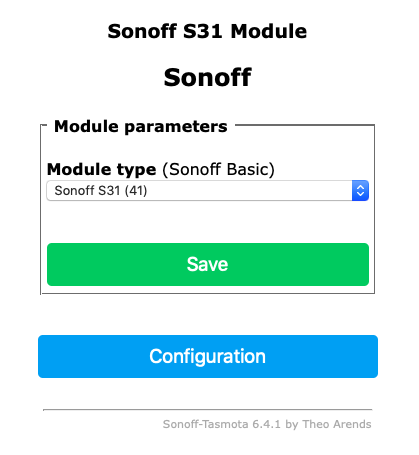
Once it has rebooted go back to the IP address of the device in your browser and it looks like this:
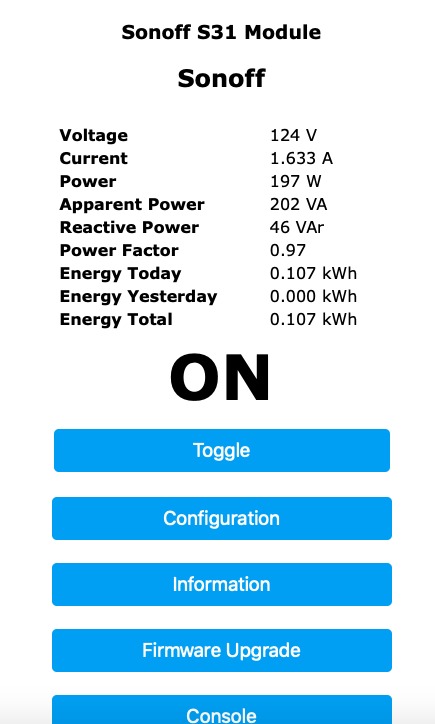
You done did it!
This is my garage refrigerator which I think is a horrible offender of electricity. However, after hooking it up it isn’t as bad as I thought. This is it with the compressor kicked on.
I’m pulling about 200 watts which is about right and this puts me on par with about a 1 to 2 kWh usage per day.
That’s all good in the winter but this bad boy is in the garage. The real test will be the dead of summer as that fridge seems to run non stop out in the hot garage to try to stay cool.
If that’s the case I may double or even triple my consumption which means that this refrigerator is ONLY suitable for indoor use or that I need to send it to Refrigerator Heaven.
Time will tell. Average yearly cost of this fridge (having only monitored it for less than one day) seems to be around $160 a year. Also consider that I have ANOTHER refrigerator inside the house and a deep freezer too. As nice as it is to have a drink refrigerator in the garage IT MAY BE COSTING ME BIG MONEY.
Next test: How much energy do my TV’s use? TV’s are typically horrible offenders of power because they are basically on all the time. “But John, I turn my TV off when I’m not using it”. Well, guess what? That TV is more or less in standby mode ready to roll. It isn’t really off and it’s still drawing power. Look back at my screenshot above. See the big “ON” with the Toggle Button underneath it? Click that and NOW your TV is off.
So this device can SAVE YOU REAL TANGIBLE DOLLARS.
Actually my TV is not too bad. It pulls about 1 watt at the so called “off” position. That’s about a dollar a year.
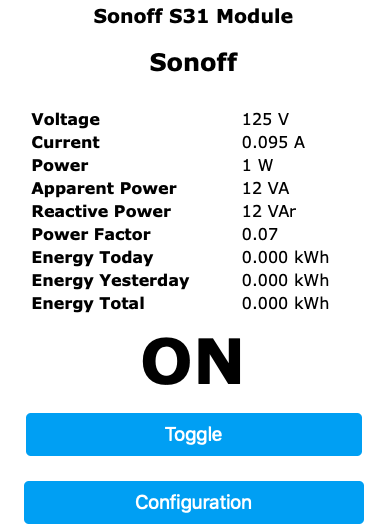
Now lets turn it on. GAACK! It pulls 62 watts.

Lets say I’m one of those weirdos who sleeps with the TV on. So lets figure that’s 8 hours right there. Then lets assume you have it on 2 or 3 other hours a day.
That’s $2.50 a month or $30 a year. That’s where I live. I saw a friend of mine post that they wanted to raise rates to almost 14 cents per kWh. That’s $40 a year. Fairly substantial.
So it’s smart to know what’s costing you and what’s not.
